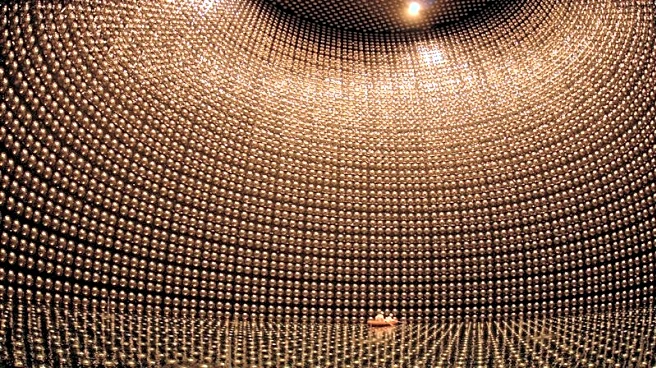What's Happening?
A team of Japanese physicists has revisited a 150-year-old theory to address the longstanding mystery of matter-antimatter asymmetry in the universe. The theory, originally proposed by William Thomson,
also known as Lord Kelvin, conceptualizes atoms as 'knots' in the aether. Although the aether concept is outdated, the researchers have applied the knot theory to wave packets of energy in the early universe. This approach suggests that cosmic knots formed during the Big Bang could have untangled over time, leading to the current matter-dominated universe. The study, published in Physical Review Letters, posits that these knots, if biased towards matter, could explain the imbalance between matter and antimatter.
Why It's Important?
The matter-antimatter asymmetry is a fundamental question in physics, as it explains why the universe is composed predominantly of matter. Understanding this imbalance could provide insights into the early universe's conditions and the fundamental forces at play. The revival of knot theory offers a novel perspective that could lead to new experimental tests, particularly through gravitational wave observatories like LIGO or LISA. If these observatories detect remnants of cosmic knots, it would not only support this theory but also advance the field of theoretical physics, potentially impacting our understanding of the universe's formation and evolution.
What's Next?
The next steps involve testing the predictions of this theory through gravitational wave observations. If cosmic knots left detectable strings, these could be observed by facilities like LIGO or LISA. Such discoveries would provide empirical support for the theory and could lead to further exploration of the role of neutrinos in the matter-antimatter imbalance. The research community will likely focus on refining the mathematical models and seeking observational evidence to validate or refute the proposed mechanism.
Beyond the Headlines
This development highlights the importance of revisiting historical scientific theories with modern tools and perspectives. It underscores the potential for old ideas to provide solutions to contemporary scientific challenges. The ethical dimension involves the responsible communication of theoretical physics to the public, ensuring that speculative ideas are clearly distinguished from established science.













